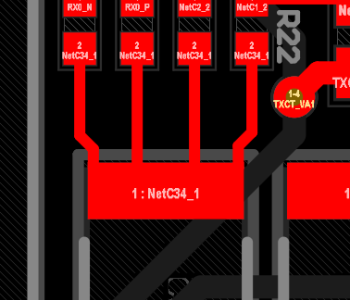Connecting several tracks to the same pad
Hello everyone! I’m designing a PCB and I have some doubts about how to connect the 4 resistors at the top to capacitor C34. They are 4 traces, and all of them terminate at the same pad of the capacitor. As I have currently placed them, are they connected correctly? Or should I connect them in a different way?

Add comment